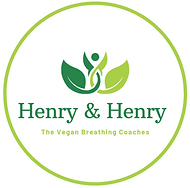Wholefoods? What are they exactly?
- Henry & Henry

- Jul 12, 2019
- 3 min read
I'm about to reveal a secret that I've harboured for a number of years. It's an admission that, when you're immersed in the world of food, is frankly a little embarrassing! Graham and I talk a lot about wholefoods, but it's taken me quite a few years to really understand what they are. What are they? Am I a bit dim, or is it really more complex than the simple term would suggest?
I've never been challenged with the notion that an apple, a cauliflower, a banana or any other straight-out-of-the-soil or picked-from-a-tree fruit or vegetable is anything other than a wholefood. Easy. But so many other things used to fall into a grey area for me. What about fruit juice with the bits in? Powdered spices and herbs? Nuts mechanically extracted from shells? Oat flakes? Olive oil! You'd think the latter would be patently obvious, but somehow I'd made an association between 'wholefood' and 'healthy' and believed olive oil to be an additive-free, healthy purchase, and therefore a wholefood. I think it's fair to say I was confused.
Am I alone? Possibly not. It turns out there's a lot to understand. All of the items questioned above (and many others) have gone through some kind of process to arrive at their new state. In some cases it means they're no longer wholefoods, fruit juice and olive oil, for example; the orange juice isn't an orange and the olive oil isn't an olive. The others are less clear because the process matters, and that necessitates another layer of consideration. Take milk for example; taken direct from the cow, it's clearly a wholefood AND unprocessed, but pasteurisation makes it different, it's been through a process which changes its make-up. Pasteurised fruit juice, therefore, is neither a wholefood nor unprocessed. So what do we do with all of this?
We're living in a food culture that's taken centuries of passed-down knowledge and understanding out of our day-to-day lives to be managed instead by an enormous profit generating industry. The wisdom and instinct that was second nature to our forebears has all but gone as industrial processes, for better and worse (but especially the latter), feed the western world, not just with foods that might be wholefoods, such as those listed above but with ultra-processed foods, some of which bear such strong resemblence to simple staple foods eaten by our grandparents and great grandparents, bread for example, that we're easily conned into trusting them to be wholesome and good. But make no mistake, most supermarket bread, and especially the ubiquitous sliced white loaf is ultra-processed, rapidly baked, and contains a list of ingredients as long as your arm, some of which are not even identifiable as foods. Governments are reluctant to make any meaningful interventions for fear of damaging the profits of the powerful companies that make up the industry; after all, the economy and 'hard-working people' are what matter, or so we're told. Have we even noticed that in taking on-board these mantras, we've down-regulated our food and mealtimes so that they don't interfere with our available time? Time for what exactly? To work through our lunch breaks?
But I digress and haven't yet answered my own question. If we want to eat good food, and why wouldn't we? then it's down to us to learn, to understand, to unpick the food confusion that surrounds us and take charge of our own eating. It's not about going back to the past; that is neither do-able nor sensible, we have access now to an abundance of food like never before in our history, but we need to really work out which items to bring into our kitchens and onto our plates. As a rule of thumb, an unprocessed or minimally processed wholefood is likely to be very worthy of consideration; you get to decide how to 'process' it in your own kitchen. Most ultra-processed foods on the other hand, are perhaps best left on the supermarket shelf.
Before you feel a sense of dismay at ever working out what is and isn't processed, and especially if you've realised that there's a middle ground between the two, there is help! There's a food classification document which makes it pretty easy to understand what is and isn't processed and what falls inbetween. That way YOU get to decide whether you want to eat it or not. The document can be found in this link. For a super simple and visual summary, there's this:

And finally, if you find some of this surprising, whatever you do, don't berate yourself for not knowing better. None of us has really been in charge of our food for a couple of generations at least. How could we know better?
~ Annette Henry



)_20230830_134131_0000.png)



Comments